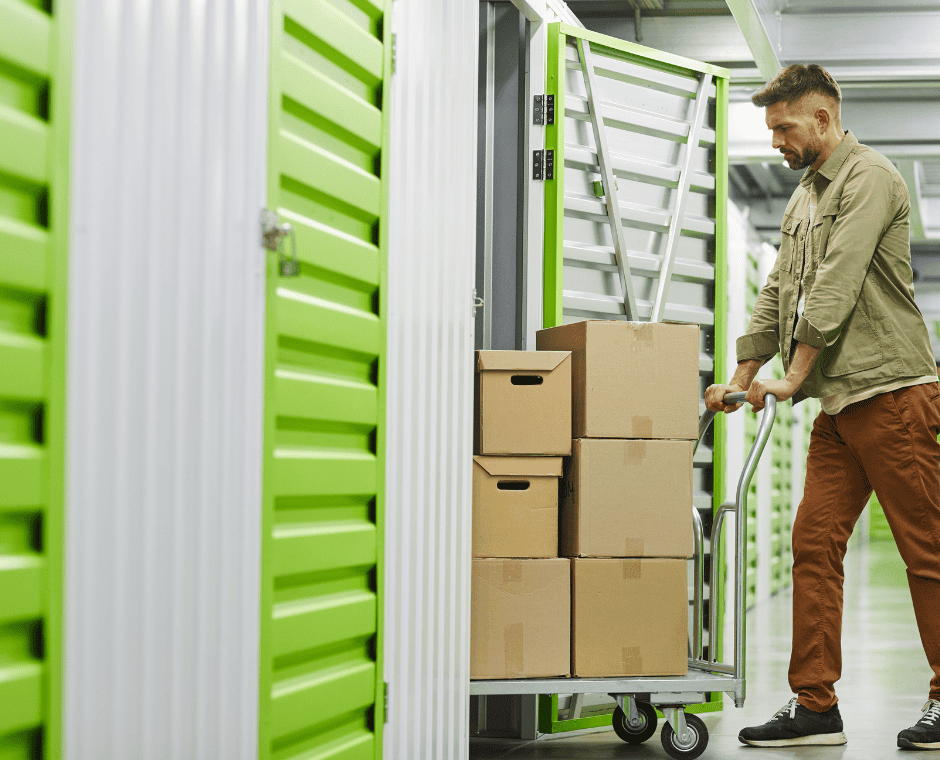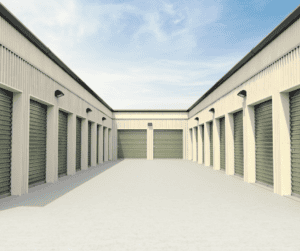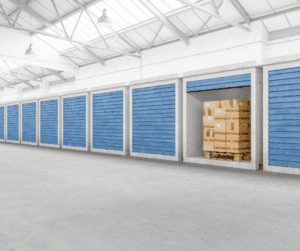Ultimate Guide to Marketing Metrics for Storage Hosts
- October 6, 2025
- Self Storage
Tracking marketing metrics is the key to understanding your storage hosting performance. These numbers reveal how well your efforts attract renters,…
Read More
The self-storage industry has exploded in recent years, with over 50,000 storage facilities across the U.S. and over 2.6 billion square feet of rentable storage space. With so many options, finding the right storage unit to meet your needs can feel overwhelming. The key is determining what you need to store, the length of time you’ll need storage, and your budget. With some preparation and research, you can easily find storage units that are the perfect fit.
This guide will walk you through the key factors in choosing a self-storage unit, from determining the right size to finding a reputable facility. We’ll also explore how to rent storage units online for added convenience. With the right information, you can confidently select a storage unit that keeps your belongings safe and accessible. Let’s get started!
When choosing a storage unit, it’s important to first determine what items you’ll be storing. This will help you select the right size unit for your needs. Consider the following:
Take an inventory of what you need to store and the approximate dimensions to determine the right unit size. Allow some extra buffer room too for easy access. The type and size of items makes a big difference, so evaluate carefully.

When it comes to choosing a storage facility, you have both online and in-person options to find and compare places that fit your needs.
Online is often the most convenient way to search for storage units in your area. You can use aggregator websites like SpareFoot.com that allow you to enter your zip code and see all the self-storage facilities nearby. These sites let you filter by things like unit sizes, monthly prices, and amenities offered. You can get a good idea of what’s available without having to drive around town.
Many storage companies also have their own websites where you can take virtual tours, view unit sizes and prices, and even rent a unit completely online. Going directly through a storage facility’s website gives you the most up-to-date information on that specific location.
If you prefer an in-person visit, you can find storage facilities in your area by searching online maps and driving around to check them out. Visiting a facility allows you to see the units and property first-hand and get answers to any questions from the staff. However, this does take more time and effort than searching online.
Whether you choose to find storage units online or in-person, it’s a good idea to compare several facilities in your area on factors like price, security, unit sizes, and cleanliness. Carefully evaluating multiple options will help you select the storage solution that best fits your needs.
There are a few main types of storage facilities to choose from:
Climate controlled units keep your belongings protected from extreme temperatures and humidity. This type of storage is ideal for protecting furniture, electronics, artwork, musical instruments, and other items that could be damaged by heat, cold, or moisture. Climate control provides stable temperatures between 55-80 degrees.
Drive-up access units allow you to park right in front of your unit to easily load and unload items. This convenient access is great if you’ll be frequently accessing your belongings. Drive-up access units are usually more expensive than interior units that require walking your items a farther distance.
Storage facilities offer varying security such as keypad gate access, individual door alarms, security cameras, and on-site managers. High security units provide more protection for your valuables with features like fully enclosed, single-entry facilities, security guards, or video surveillance. Make sure to choose a facility with sufficient security for your needs.

When choosing a self-storage unit, one of the most important factors is the size. Storage facilities offer a range of unit sizes to accommodate different needs. Here’s an overview of common sizes and what fits in each:
The dimensions and square footage help give a sense of what each unit size can realistically hold. Consider the number of bedrooms or rooms you need to empty and measure larger items to choose the right size.
Many storage facilities offer extra amenities beyond just the storage unit itself. These additional features can make storing your belongings more convenient.
Most storage facilities sell basic moving supplies like boxes, tape, bubble wrap, and packing paper right on site. This allows you to easily pick up materials for packing and moving day. Some locations even offer free boxes when you rent a unit. Purchasing boxes and packing materials from your storage facility can save you a trip to the store.
Some storage companies partner with truck rental services so you can rent a truck right at the storage facility. Having a truck rental on-site makes moving day simpler since you only have to go to one place. Storage facilities that offer truck rentals take out the hassle of coordinating pick-up and drop-off of a rental vehicle. This service provides a major convenience on moving day.
Many storage facilities allow 24/7 access to your unit. Around-the-clock availability enables you to access your belongings on your schedule. Keypad access and security cameras at facilities with 24/7 access also provide security for your stored items. The ability to get into your unit any time of day, weekends, or after work hours is a significant advantage for many renters. Choosing a company with 24/7 access can offer flexibility and convenience.

Renting a storage unit online is convenient and easy. Most storage facilities have user-friendly websites and mobile apps that allow you to browse, reserve, and pay for units entirely online.
Major self-storage chains like Public Storage, Extra Space Storage, and CubeSmart enable you to rent a unit online by entering your location and browsing available units at nearby facilities. Their websites provide details on each unit’s size, features, monthly rental rate, and current availability. Many also have online pricing calculators and size recommendation tools to help match you with the ideal unit.
Now more than ever, it’s easier to find self-storage and parking space on online platforms such as PeerStorage. PeerStorage works with self-storage facilities, parking lots, and commercial property owners to connect with self-storage renters like you. PeerStorage makes it easy to find and rent online for facilities
Once you’ve selected a unit, you can reserve it online by providing your contact information and payment details. The storage company will send a rental agreement that you can electronically sign. Paying rent monthly is simple through automatic credit card charges or bank account withdrawals. Some sites also allow you to set up one-time payments.
If the storage facility has a mobile app, you can manage your account fully from your smartphone. Features like these make the entire rental process quick and convenient without ever having to visit the office. Apps also provide reminders when rent is due, notifications of late fees, and tools to update credit card information.
Whether using the website or mobile app, renting a storage unit online is the easiest way to get started and manage your account.
When renting a storage unit, it’s important to know what types of belongings are allowed to be stored. Storage facilities have rules and regulations regarding prohibited items for safety and legal reasons. Here’s an overview of what you typically can and cannot store in a storage unit:
Most storage facilities prohibit storing anything that could be dangerous, flammable, perishable, or illegal. Be sure to check your storage provider’s list of allowed and prohibited items before moving in your belongings. Let them know if you need to store anything questionable or unusual.
When organizing your storage unit, it’s important to arrange items efficiently to maximize space and make retrieval easy. Here are some tips:
With some advance planning and effort, you can keep your storage unit tidy and make the most of the space. This allows you to easily store and find items when needed.
Renting a storage unit can be a great solution when you need extra space but don’t want the hassle of a bigger home. With the tips in this article, you should now feel confident finding and renting a storage unit that meets your needs.
To recap, start by determining how much space you need and what you plan to store. Compare different storage facilities in your area based on amenities, security, and price. Look at the different unit sizes available and opt for a unit that gives you some room to grow over one that’s jam-packed. Take advantage of features like climate control and 24/7 access if it fits your situation.
The process of renting a unit and paying for it has gotten much simpler with online rental platforms. You can often reserve a unit, submit payment, and manage your account completely online. Just be sure to read all policies carefully before signing.
With a well-organized storage unit, you can safely store almost anything from extra furniture to seasonal items to memorabilia. Take time to properly label boxes and shelves so you can easily find what you need.
Finding the right storage solution takes a bit of planning and research upfront, but it’s worth it for the convenience and peace of mind. Don’t let clutter take over your home – rent a storage unit that meets your needs today!
Join The Discussion